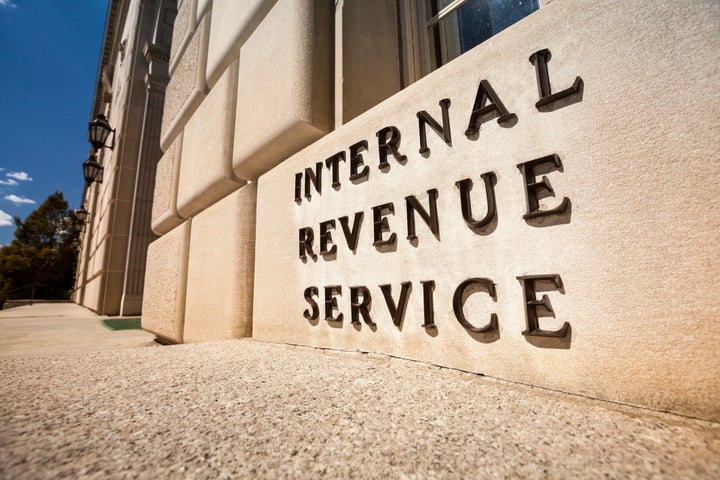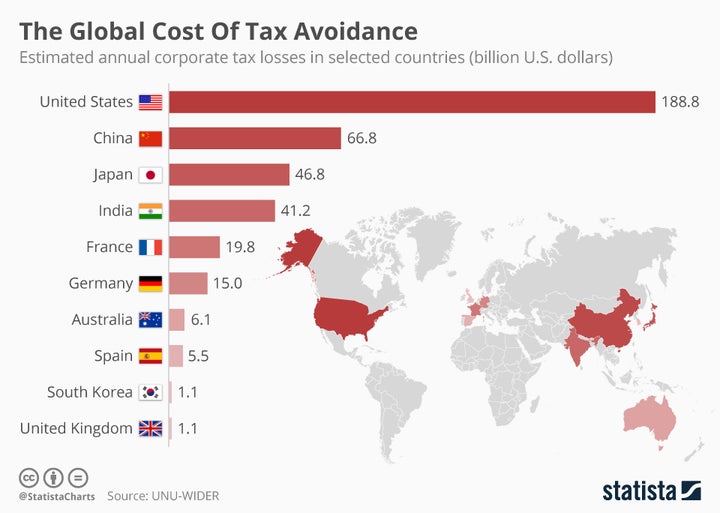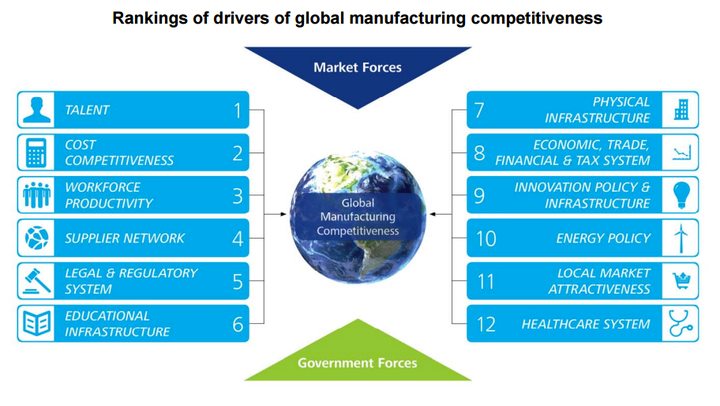
At 75,000 pages and 2.4 million words, the U.S. tax code is twice the size of Encyclopedia Britannica and nearly 200 times longer than it was a century ago. According to the latest report from our National Taxpayer Advocate at the IRS (who knew we had one?), it takes individuals and businesses 6 billion hours every year to prepare and file their taxes. Congress has made 5,900 changes to the code since 2001, but the tax system has not had a comprehensive makeover in 30 years.
As President Trump and the Congress embark on tax reform, their objective should be more than collapsing brackets and cutting the code down to the size of a good novel. The tax code should be a powerful tool for making the country stronger, fairer and better equipped for the 21st century. Here are some items that should be on our checklists as we grade how the Administration and Congress do.
Corporate competitiveness
At 35 percent, the corporate tax rate in the United States is the third highest in the world and the highest among industrial nations. While Trump and Speaker Paul Ryan have not agreed on what the rate should be, both want it cut roughly in half on the assumption that fewer companies will leave, more will come, and many will repatriate some of the $1 trillion they have parked offshore to avoid taxes.
There are a few things to keep in mind. First, the United States is not considered a laggard in creating a competitive manufacturing environment. Deloitte Touche asked 500 corporate CEOs around the world last year to rank manufacturing competitiveness by country. The United States ranked second, just behind China. The executives predicted that the U.S. would climb to No. 1 by 2020. Second, U.S. companies actually pay far less in taxes than the 35 percent rate suggests. In fact, an international research center determined that the U.S. has the highest amount of corporate tax avoidance in the world. American corporations use tax breaks and loopholes to cut their collective tax liability by nearly $190 billion annually (Figure 1).

Figure 1: U.S. corporations have one of the highest tax rates in the world, but they also have the highest amount of tax avoidance.
So, if the corporate tax rate is reduced, the number of tax shelters, loopholes, subsidies and breaks should be greatly reduced, too.
The president and Congress should also consider whether a big cut in corporate taxes is the best investment to keep U.S. companies at home. In its survey of CEOs, Deloitte Touche found that many other factors ranked higher than taxes in driving manufacturing competitiveness (Figure 2). They include a talented and productive workforce, a good education system and modern physical infrastructure. A decent energy policy and healthcare system are among the top twelve drivers, too.

Figure 2 - Where the tax code should focus for U.S. competitiveness: Global CEOs point to talent, cost competitiveness, and workforce productivity as the top three drivers of manufacturing competitiveness.
Wealth and income inequality
Research by the World Economic Forum earlier this year found that the U.S. ranks next to last in the world in net income and wealth equality. The problem with Trump’s trickle-down approach to economics is that there is little or no trickle. What will tax reform do about the Americans at or near the bottom of the income range whose wages have stagnated and who feel with justification that their American Dream has slipped away? Will Congress keep Trump’s promise to “massively lower taxes on the middle class?” What else will it do to close the income and wealth gaps? Will tax reform also address the country’s gender and racial wage inequality?
Energy subsidy reform
There is a consistent drumbeat by fiscal conservatives that free-market forces rather than the government should “pick winners” among energy technologies. But the same conservatives are chronically silent about one of the largest government-supported market distortions ― taxpayer subsidies. Various estimates put federal tax subsidies for fossil fuels at around $30 billion annually. The result, especially with Trump’s efforts to emasculate the EPA and rescind environmental regulations, is that the current tax code encourages air, land and water pollution from the production and consumption of oil, coal and natural gas.
If Republicans want to be sincere about free-market economics, they will phase out fossil energy subsidies on the same timetable as they are already phasing out subsidies for renewable energy.
Taxing carbon pollution
There is another big reason our energy markets are broken. The actual cost of energy includes its impacts on public health and the environment. Those costs are not reflected in consumer prices, however. Tax reform should close the gap between market prices and actual costs. One way to begin is to attach a surcharge to fossil fuels — the so-called carbon tax — to better reflect the full and true costs of carbon pollution.
One point of contention is what the federal government would do with the additional tax revenues. The plan with least political risk is to send all the revenues back to the American people. Instead, Congress should invest a significant portion of the revenues in modernizing America’s outdated energy infrastructure. The outdated electric grid is inhibiting the spread of pollution-free solar and wind energy.
Recent power outages in Michigan, New York and San Francisco are the latest evidence of how bad weather and antiquated equipment shut down vital energy services. A government study estimates that weather, the most common cause of power interruptions, costs the national economy tens of billions of dollars every year. Four months ago, the U.S. Department of Energy warned that the electric grid is in imminent danger from cyberattacks. Last month, a report from MIT recommended federal tax incentives for the owners of gas pipelines and the electric grid to protect them from cyberattack. Another portion of new revenues could help Americans improve the energy efficiency of their homes, businesses and transportation choices so that savings on energy bills help offset any increase in consumer prices.
Address 21st century realities
The tax code needs to address other new realities. Should it encourage people to make their homes and businesses more resilient to extreme weather or, better yet, to move buildings out of hazard zones? Should it spur the development of community-scale micro-grids to make power supplies more secure? Should the code encourage workers to retrain themselves for the skills they need in our rapidly changing economy?
In short, the job before Congress is not simply to simplify the tax code. It is an opportunity to help modernize America, update the skills of the workforce, reduce economic inequities, eliminate perverse and counterproductive subsidies, and make our lives and country more secure. Those are among the criteria we should use to judge how successful the president and Congress are in retooling the tax system.
